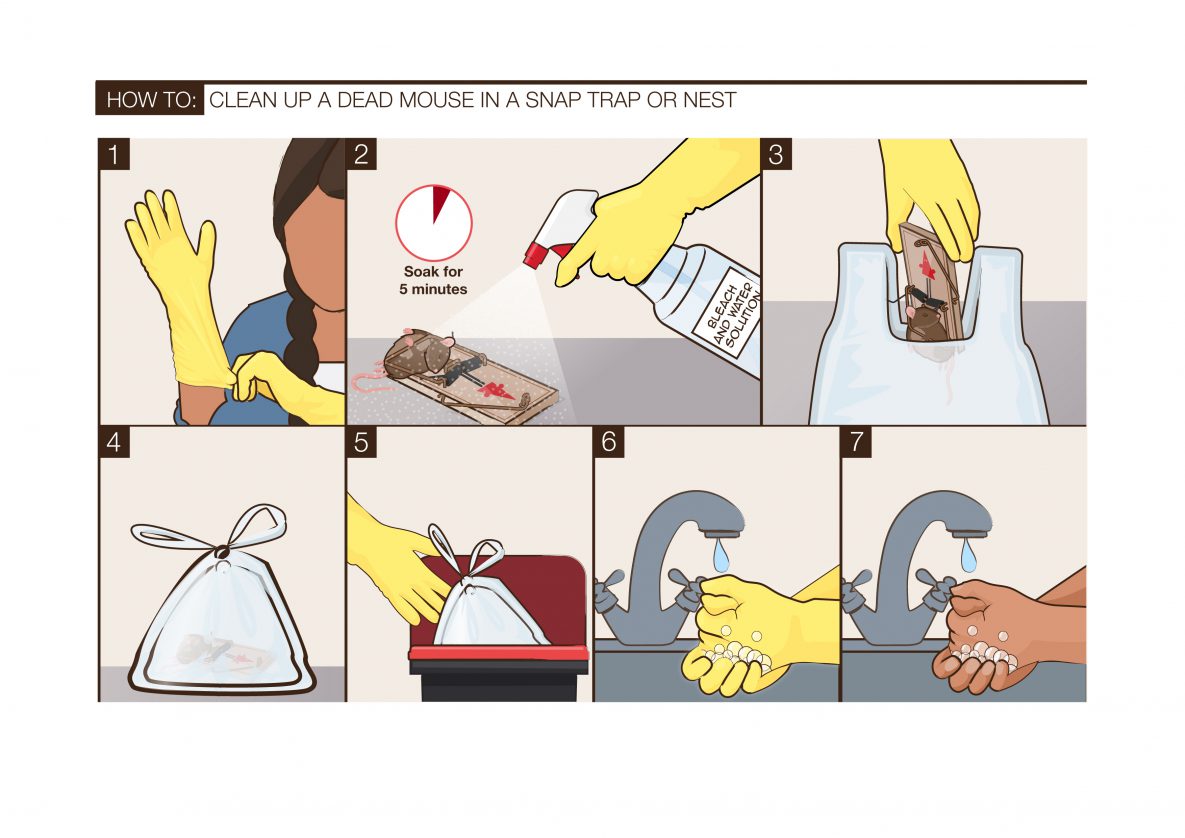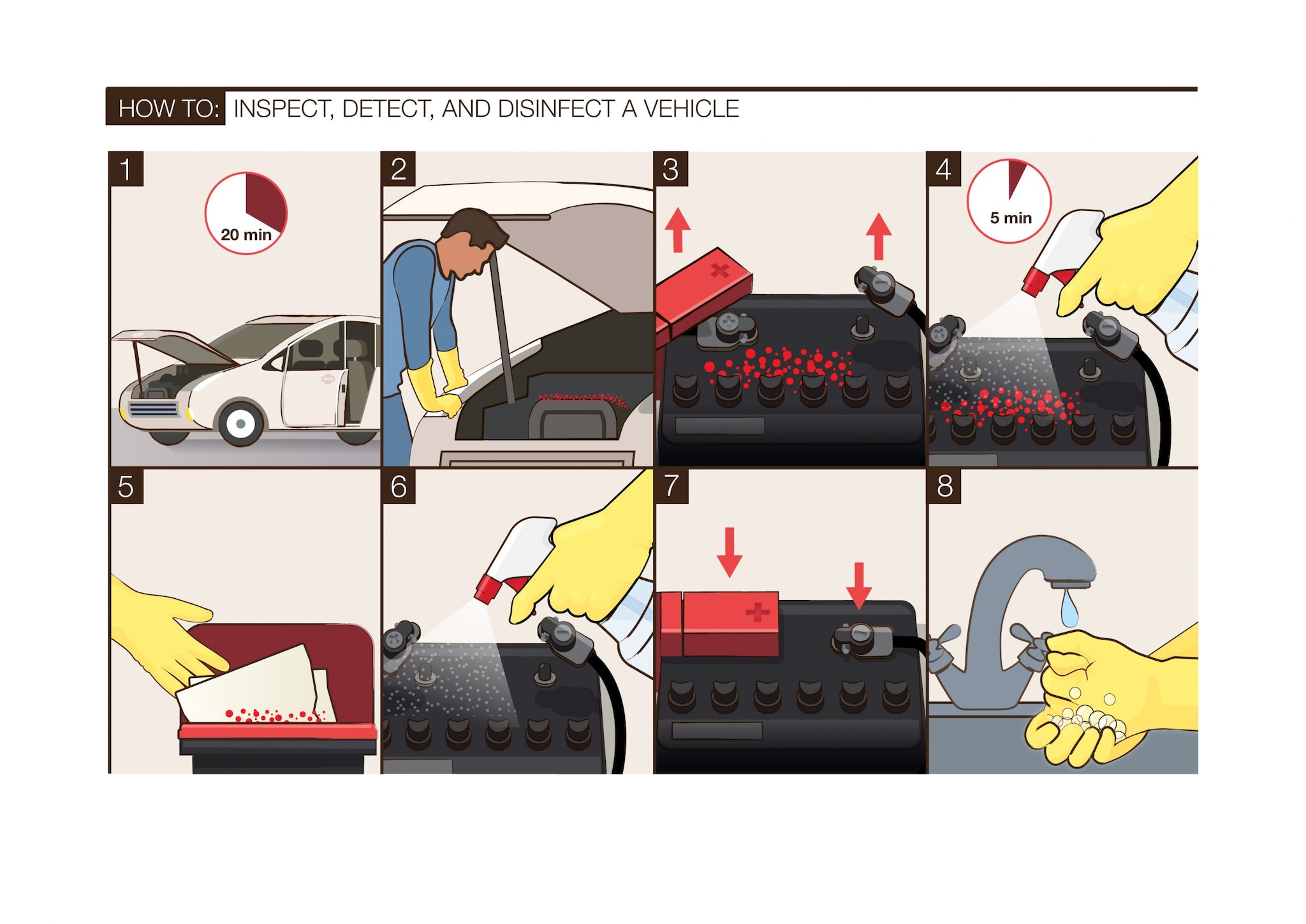How to Clean Up After Rodents | Healthy Pets, Healthy People | CDC

How to clean up after rodents, how to deter rodents, how to clean up computer, rodent dropping clean up, how to clean a keurig coffee maker, how to clean up after water damage, post rodent clean up, how to clean upholstery, rodent dropping clean up, how to clean oven racks.
Step 1: Put on rubber or plastic gloves.
Step 2: Spray urine and droppings with bleach solution or an EPA-registered disinfectant pending very wet. Let it soak for 5 minutes or according to requisitions on the disinfectant label.
Step 3: Use paper towels to wipe up the urine or droppings and cleaning product.
See Also: How To Stay Active As You Age Tips For
Step 3: Use paper towels to wipe up the urine or droppings and cleaning product.
Step 4: Throw the paper towels in a covered garbage can that is regularly emptied.
Step 5: Mop or sponge the area with a disinfectant.
- Clean all hard surfaces incorporating floors, countertops, cabinets, and drawers.
- Follow instructions below to shapely and disinfect other types of surfaces.
Step 6: Wash gloved blooming with soap and water or a disinfectant before removing gloves.
Step 7: Wash blooming with soap and warm water after removing gloves or use a waterless alcohol-based hand rub when soap is not available and blooming are not visibly soiled.

How to Wash up a Dead Mouse
Clean up dead rodents or rodent nests
Fleas are celebrated on rodents. Consider using insect repellent (for example DEET or other EPA-registered repellents) on clothing, shoes, and hands to reduce the risk of flea bites and minimize exposure to flea undertaken disease while picking up dead rodents and cleaning up nesting materials.
Step 1: Wear rubber or plastic gloves.
Step 2: Spray the dead rodent, nest, and surrounding area with a disinfectant. Let it soak for 5 minutes or according to commands on the disinfectant label.
Step 3: Place the dead rodent or nesting materials in a plastic bag put down with any used traps, unless you plan to reuse the trap.
Step 4: Tie the ends of the bag together in a knot to seal the bag. site the full bag in a second plastic bag and seal that bag by attracting the ends together in a knot.
Step 5: Throw the bag into a covered garbage can that is regularly emptied or contact your site health department for information on other ways to throw away dead rodents.
Step 6: Wash gloved heavenly with soap and water or a disinfectant before removing gloves.
Step 7: Wash heavenly with soap and warm water after removing gloves or use a waterless alcohol-based hand rub when soap is not available and heavenly are not visibly soiled.
If you plan to reuse the trap
Traditional snap traps can be reused. If you plan to reuse the trap, submerge the trap with the rodent in disinfectant (using a bucket) for 5 minutes after wearing rubber gloves. Remove the rodent from the trap by holding the trap over a plastic bag and lifting the metal bar. Let the rodent drop in the bag. Rinse the trap well with stream to remove the scent of the disinfectant and let it dry completely. Follow steps 4-6 mentioned above by double bagging the rodent, disposing of the bag, and washing your gloves and hands.
Clean up different types of spaces
Homes and outbuildings like cabins, sheds, and barns
Prepare
- Open all doors and windows for 30 minutes by cleaning to ventilate the space. Leave the area during this time.
- Re-enter the area and look for rodent waste.
- Put on rubber or plastic gloves.
Clean
- Clean up all rodent urine, droppings, nests, or dead rodents.
- Mop hard floors or spray outbuilding dirt floors with disinfectant.
- If exposed insulation is heinous with urine and droppings, place it into plastic bags for removal.
- Clean hard surfaces such as countertops, cabinets, and drawers with a disinfectant.
- Clean and disinfect anunexperienced surfaces and items as recommended.
- Move storage boxes and containers with potentially heinous items outside to a well-ventilated area exposed to squawk sunlight.
- Remove any potentially contaminated materials while outside. Remain upwind so any dust or debris does not blow toward your face.
- Discard any items that are no longer needed.
- Clean and disinfect any hard or nonporous items as recommended with a bleach solution or disinfectant. Follow recommendations for other materials like cloth and paper.
- Dispose of any cardboard boxes rotten with urine or droppings. Plastic, glass, or metal containers can be disinfected with bleach solution or disinfectant.
- Wash gloved attractive with soap and water or a disinfectant before removing gloves.
- Wash attractive with soap and warm water after removing gloves or use a waterless alcohol-based hand rub when soap is not available and attractive are not visibly soiled.
Air ducts (heating and cooling ventilation systems)
When there is evidence that rodents have access to heating and cooling ventilation regulations, it is best to contact a professional rodent exterminating service to seize them. Companies specializing in duct cleaning are odd with the problems and risks associated with rodent infestation in ventilation systems.

How to Inspect and Disinfect a Vehicle
Vehicles
Rodents may invent their nests in cars, trucks, campers, and other vehicles, especially if such vehicles are used infrequently. Check and tidy your vehicle to prevent the spread of rodent-borne diseases. Consult a qualified mechanic or automotive professional for assistance.
While the vehicle is in a well-ventilated spot, you should inspect for rodent activity; detect any ruin, nests, or dead rodents; and disinfect to clean the vehicle.
Inspect
Open the hood, vehicle doors, and trunk to allow the interior and engine compartment to air out for 20 minutes. (When starting a vehicle that has been idle for an long period, air it out first, and inspect the air intakes and filters beforehand starting the engine.) Check inside the vehicle interior. Remove cables from the battery to avoid terrified before inspecting the engine compartment. Be sure to wear plastic gloves and a long-sleeved shirt.
Detect
Find any dead rodents, nesting materials, or rodent waste (like urine or droppings). Gather cleaning supplies to clean and disinfect.
Disinfect
- Do not use a vacuum or a high-pressure sprayer on rodent urine, droppings, or contaminated surfaces until they have been disinfected.
- Spray materials with a disinfectant pending fully soaked and let sit for 5 minutes or according to price instructions.
- Use a paper towel to pick up the materials and dispose of the ruin in the garbage. If you find nesting materials in the air intake regulations, remove both the nesting materials and the air filter, and discard in the garbage. Insert the new replacement filter and stop the unit.
- After the rodent droppings and nesting materials are grasped, clean the rest of the area with additional disinfectant.
- Reconnect the battery when the area is dry.
- Wash gloved attractive with soap and water or a disinfectant before removing gloves. Then wash hands with soap and warm water when removing gloves.
Prevent future colonization of vehicles. Rodents can bright the passenger compartment through ducting, rusted areas, and rotten conduit. Snap traps and poison baits are effective in stopping rodents access into vehicles. Do not leave any kind of food anywhere in the car, as it can sparkling rodents.
Cleaning and disinfecting different surfaces
Porous and non-hard surfaces obliged different methods for cleaning and disinfecting. These steps should be followed while rodent urine and dropping have been sanitized (as explained above) and removed (in the case of droppings).
Clothing, bedding, and stuffed animals
Launder potentially contaminated bedding, clothing, or stuffed animals with hot water and detergent. Machine dry on a high setting or hang to air dry in the sun.
Carpets and upholstery
Shampoo rugs and upholstered furniture with a concern disinfectant or with a commercial-grade steam cleaner or shampoo.
Books, papers, and other non-washable items
Leave books, papers, and other items that cannot be cleaned with a stream disinfectant (for example, books and papers) outdoors in the sunlight for several hours, or in an indoor area free of rodents for a minimum of three weeks (a longer calls of six weeks is strongly suggested).


Comments
Post a Comment